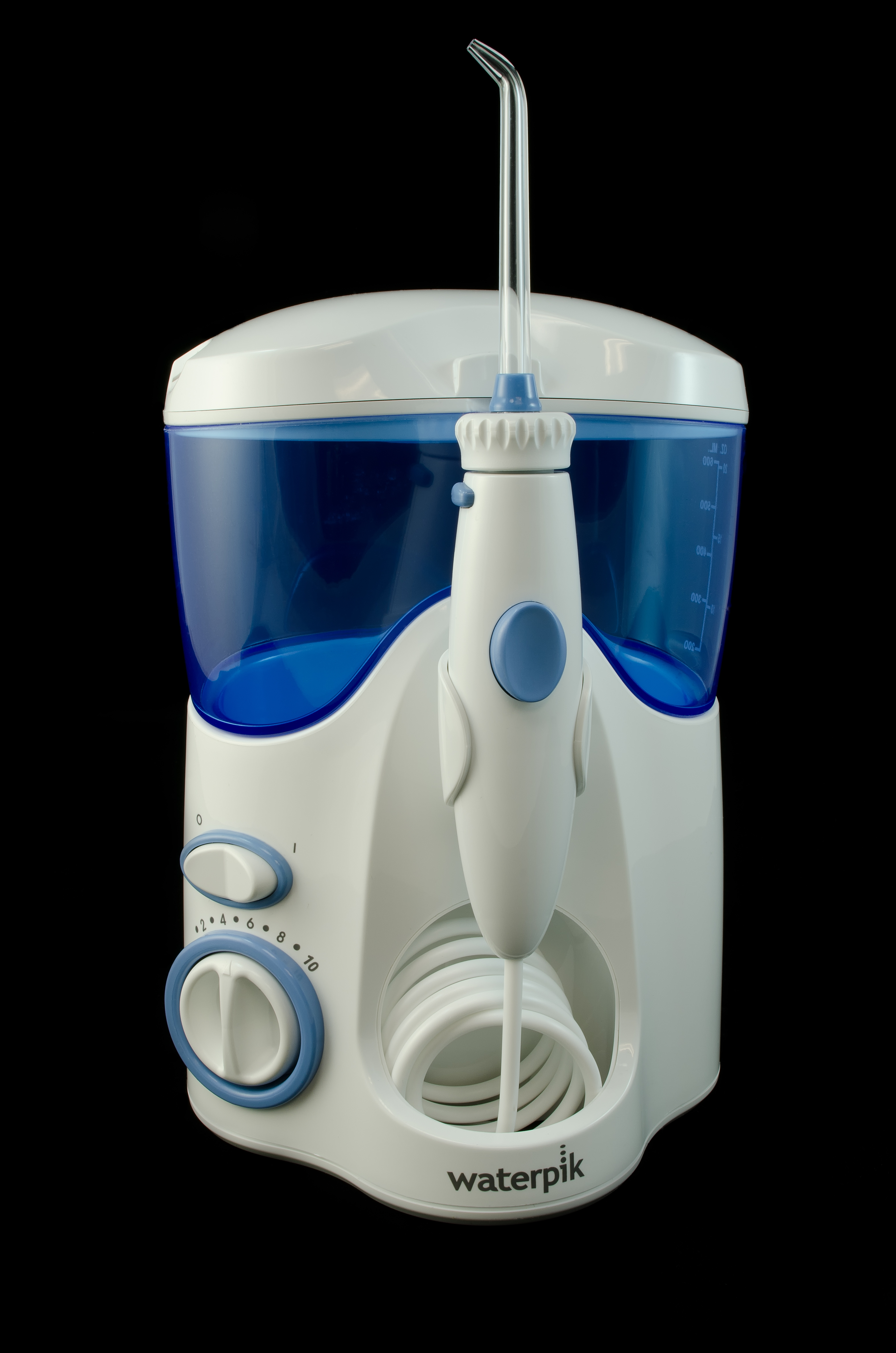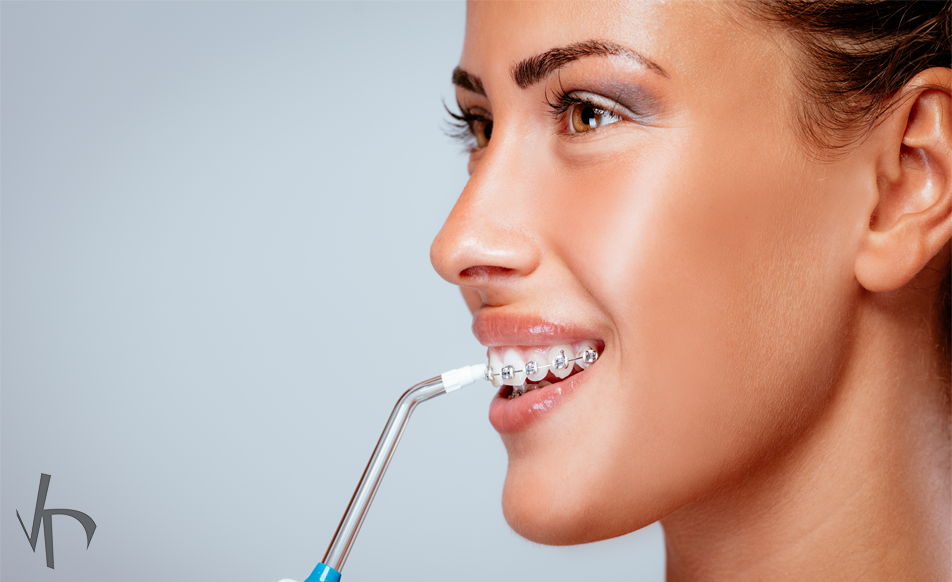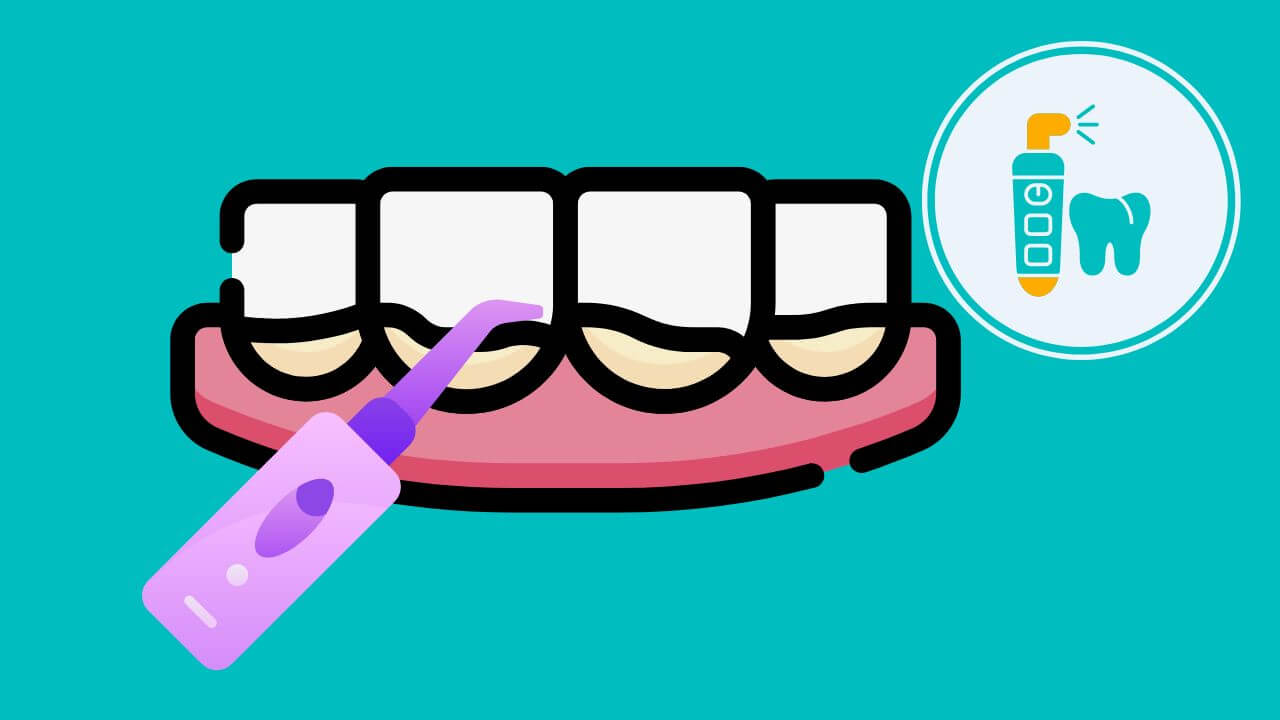what is dental irrigation: Dental irrigation is a procedure that involves flushing the teeth and gums with a liquid solution. It helps remove plaque and food debris.
Dental irrigation is beneficial to maintain oral hygiene and prevent gum disease. By effectively cleaning hard-to-reach areas, dental irrigation complements regular brushing and flossing. This procedure can be done at home using a water flosser or as part of a professional dental cleaning.
Dental irrigation can improve oral health by reducing bacteria and promoting healthier gums. Understanding the importance and benefits of dental irrigation can contribute to a brighter smile and better oral hygiene.
Introduction To Dental Irrigation
Dental irrigation is a crucial part of maintaining proper oral hygiene. It involves the use of a device that delivers a targeted stream of water or another irrigant to remove food particles and plaque from between teeth and along the gumline. This technique complements brushing and flossing, helping to ensure a thorough cleaning and reduce the risk of gum disease and tooth decay.
The Concept Of A Cleaner Smile
Dental irrigation is designed to provide a deeper clean than brushing and flossing alone. The focused stream of water or solution helps dislodge debris and bacteria from areas difficult to reach with traditional oral hygiene methods. This can lead to a brighter, healthier smile and fresher breath.
The Role Of Dental Irrigation In Oral Hygiene
Dental irrigation plays a vital role in supporting overall oral health. Effectively removing lingering particles and bacteria helps prevent the buildup of plaque and tartar, which are significant contributors to gum disease and cavities. This proactive approach can lead to improved gum health and a reduced risk of dental issues in the long run.
History Of Dental Irrigation
From Ancient Cleaning Methods To Modern Technology
Dental irrigation, the process of cleansing the teeth and gums using a steady stream of water, has a rich history dating back to ancient civilizations.
Evolution Of Oral Irrigation Devices
Over time, oral irrigation devices have evolved from simple tools to advanced, high-tech gadgets designed to provide effective and efficient oral care.
Types Of Dental Irrigators
Discover various types of dental irrigators and essential tools in dental hygiene routines. These devices use water to clean between teeth and along the gumline, promoting optimal oral health.
Types of Dental Irrigators
Dental irrigation is an oral hygiene practice that involves cleaning your teeth and gums with a stream of water. It is an effective way to remove food particles, bacteria, and plaque from your mouth, providing a deep clean that regular brushing and flossing cannot achieve. There are several types of dental irrigators that you can use to maintain good oral health. Let’s look at each type and see which is right for you.
Countertop Oral Irrigators
Countertop oral irrigators, also known as water flossers, are the most common type of dental irrigator. They are typically used at home and require an electrical outlet to operate. These irrigators are equipped with a water reservoir, a motor, and a wand with a nozzle. The water pressure can be adjusted to suit your needs, and some models even come with multiple tips for different cleaning purposes.
Cordless Water Flossers
Cordless water flossers are similar to countertop oral irrigators but are battery-operated and do not require an electrical outlet. They are now easier to operate and more portable as a result. Cordless water flossers are ideal for people who travel frequently or have limited space in their bathroom. They are also great for braces, implants, or other dental work requiring extra care.
Portable Irrigators for On-The-Go Use
Portable irrigators are the smallest and most portable type of dental irrigator. They are designed for on-the-go use and can be easily carried in your pocket or purse. These irrigators are ideal for people who are always on the move and need to maintain good oral health while away from home. They are also great for kids learning to care for their teeth and gums.
Conclusion
In conclusion, dental irrigation is essential for maintaining good oral health. Whether you choose a countertop oral irrigator, a cordless water flosser, or a portable irrigator, you can be sure that you are getting a deep clean that brushing and flossing alone cannot achieve. So, choose the type of dental irrigator that best suits your needs and start enjoying the benefits of a healthier mouth today!

Credit: m.youtube.com
How Dental Irrigation Works
Dental irrigation, also known as water flossing, is a crucial part of maintaining good oral hygiene. It involves using a device to direct a stream of water into the spaces between the teeth and along the gum line to remove food particles and plaque. Understanding how dental irrigation works and its mechanics can help you make the most of this effective oral hygiene practice.
The Mechanics Behind Water Flossing
Water flossing works by delivering a targeted stream of water to remove plaque and debris from areas that are difficult to reach with traditional flossing. The high-pressure water stream dislodges food particles and bacteria, leaving your teeth and gums clean and healthy.
Pressure Settings And Their Effects On Oral Health
The pressure settings on a dental irrigation device play a crucial role in its effectiveness. Higher pressure settings can effectively remove plaque and debris, while lower pressure settings are gentle on the gums, making them suitable for individuals with sensitive gums or dental work.
Benefits Of Regular Dental Irrigation
Dental irrigation involves using a pulsating stream of water to clean between the teeth, along the gum line, and around dental work. Regular dental irrigation offers a range of benefits, contributing to improved oral health and hygiene.
Reduction Of Plaque And Gum Disease
Dental irrigation helps to reduce the buildup of plaque and bacteria in the mouth. Pulsating water effectively cleans areas that are difficult to reach with a toothbrush or floss, decreasing plaque and the risk of gum disease.
Enhancing The Effectiveness Of Brushing And Flossing
By reaching areas that traditional brushing and flossing may not fully clean, dental irrigation enhances the overall effectiveness of oral hygiene. It ensures that all areas of the mouth receive thorough cleaning, leading to improved oral health and reduced risk of dental issues.

Credit: en.wikipedia.org
Dental Irrigation For Specific Conditions
Discover the benefits of dental irrigation for specific conditions. This technique involves using a pulsating stream of water to clean hard-to-reach areas in the mouth, promoting better oral health.
Dental irrigation, also known as water flossing, is a dental hygiene technique that involves using a stream of water to clean teeth and gums. While dental irrigation is beneficial for everyone, it can be particularly helpful for individuals with specific dental conditions. Let’s look closer at two particular conditions that can be managed with dental irrigation.
Managing Periodontal Pockets
Periodontal pockets are spaces between the teeth and gums that can become inflamed and infected. These pockets can lead to gum disease and tooth loss if left untreated. Dental irrigation can be an effective way to manage periodontal pockets.
The pulsating water stream from a dental irrigator can reach deep into the pockets and remove debris and bacteria that brushing and flossing may miss. Additionally, dental irrigators can be filled with antibacterial solutions, further reducing the risk of infection.
Supporting Orthodontic Care With Water Flossing
Orthodontic appliances like braces and aligners can make it challenging to clean teeth and gums effectively. Traditional floss can be difficult to use and can even damage the appliances. On the other hand, dental irrigation can easily clean the appliances without causing any harm.
A dental irrigator with an orthodontic tip can help thoroughly clean all areas around the appliances. This can help prevent tooth decay, gum disease, and other dental issues that can arise during orthodontic treatment.
In conclusion, dental irrigation can be an effective tool for managing specific dental conditions. Using a dental irrigator, individuals can clean areas of the mouth that may be difficult to reach with traditional brushing and flossing techniques. Whether you have periodontal pockets or orthodontic appliances, dental irrigation may benefit your dental hygiene routine.
Comparing Dental Irrigation To Traditional Flossing
Choosing the correct cleaning method between teeth is crucial when maintaining optimal oral hygiene. Dental irrigation, also known as water flossing, has become an alternative to traditional string flossing. This section will explore the pros and cons of water flossing and what research says about oral irrigation versus string floss.
The Pros And Cons Of Water Flossing
Water flossing, as a method of interdental cleaning, has several advantages and disadvantages to consider:
- Pros:
- Effective for people with braces or dental implants
- Gentle on gums
- Easy to use for individuals with dexterity issues
- Can reach areas where traditional floss may not
- It may reduce bleeding and inflammation
- Cons:
- Requires electricity or batteries for powered devices
- Initial cost of purchasing a water flosser
- It can be messy if not used properly
- It may not be as effective as traditional floss for plaque removal
What Research Says About Oral Irrigation Vs String Floss
Research comparing the effectiveness of oral irrigation and traditional flossing has yielded exciting findings:
| Criteria | Oral Irrigation | String Flossing |
|---|---|---|
| Plaque Removal | It may be less effective | Effective at removing plaque |
| Gum Health | It may reduce bleeding and inflammation | It may irritate if used improperly |
| Accessibility | Can reach areas that are difficult to access | May be challenging to use in certain areas |
| Convenience | Easy to use for individuals with dexterity issues | Requires proper technique for practical use |
Incorporating Dental Irrigation Into Your Routine
Best Practices For Effective Water Flossing
Dental irrigation, or water flossing, can be a valuable addition to your oral hygiene routine. Incorporating dental irrigation into your daily routine can help enhance your dental health and complement traditional brushing and flossing. By following best practices, you can maximize the effectiveness of water flossing.
- Fill the water reservoir with lukewarm water or as recommended by your dentist.
- When increasing pressure, start with the lowest setting and go up gradually as needed.
- Hold the tip at a 90-degree angle to your gumline.
- Move the tip along the gumline and between your teeth, pausing briefly at each area.
- To prevent irritating your gums, be thorough but gentle.
Common Mistakes To Avoid
While incorporating dental irrigation into your routine, you must be aware of common mistakes that can diminish effectiveness. Avoiding these mistakes will ensure you get the most out of your dental irrigation routine.
- Using too cold or too hot water can cause discomfort and may not effectively remove debris.
- Setting the water pressure too high can lead to gum irritation and potential damage to the gums.
- Not cleaning the water reservoir regularly can lead to bacterial growth and compromise hygiene.
- Skipping flossing and brushing instead of relying solely on dental irrigation may leave debris and plaque untouched.
Choosing The Right Dental Irrigator
Dental irrigation, also known as water flossing, effectively removes plaque and food debris from between teeth and below the gumline. When choosing a suitable dental irrigator, consider factors such as water pressure settings, reservoir capacity, and any additional features that may suit your oral care needs.
A vital component of keeping up proper oral hygiene is dental irrigation.
When selecting a dental irrigator, consider your specific needs and preferences.
Features To Consider When Purchasing
- Water Pressure: Opt for adjustable pressure settings for a customized clean.
- Noise Level: Choose a quiet model for a more comfortable experience.
- Tank Capacity: Ensure the reservoir size meets your usage requirements.
Top-rated Dental Irrigators On The Market
| Brand | Features | Price |
|---|---|---|
| Waterpik | Multiple tips, variable pressure | $70 |
| Philips Sonicare | Compact design, easy-to-use | $80 |
| Oral-B | Rotating nozzle, large reservoir | $90 |
Maintenance And Care Of Your Dental Irrigator
Proper maintenance is crucial to ensure the longevity and effectiveness of your dental irrigator. You can keep your device in top condition for optimal performance by following simple care routines.
Cleaning Your Device
- Rinse the water reservoir after each use.
- Use a mixture of water and vinegar to clean the device weekly.
- Remove any debris or buildup from the nozzles regularly.
Troubleshooting Common Issues
- If the device is not producing a steady stream, check for clogs in the nozzle.
- To stop leaks, make sure all connections are secure.
- Confirm the power source is functional if the device fails to turn on.
Testimonials And Success Stories
Learn about dental irrigation through our testimonials and success stories. Discover how this effective technique has transformed the oral health of our satisfied patients. Hear first-hand experiences of the benefits and results of dental irrigation.
Real-life Experiences With Dental Irrigation
Many individuals have shared their positive experiences with dental irrigation, highlighting its significant impact on their oral health. Here are some real-life stories that showcase the success of water flossing:
Testimonials
- “Water flossing made my gums feel healthier and reduced bleeding during brushing.”
- “Using a water flosser made me feel cleaner, which motivated me to floss more frequently.”
Success Stories
- Sarah: “My gum health has significantly improved after my dentist introduced dental irrigation into my regimen.”
- John: “Using a water flosser helped me reach areas that traditional floss couldn’t, leading to fewer cavities and fresher breath.”
These testimonials and success stories highlight the effectiveness and benefits of water flossing in enhancing oral care routines and overall dental health.
Conclusion: Embracing The Smile Secret
Dental irrigation is a technique that involves using a stream of water to clean teeth and gums. Embracing this smile secret can improve oral hygiene and prevent dental problems.
The Future Of Dental Irrigation
The advancement in dental irrigation technology holds the promise of enhanced oral care.
With innovative devices and solutions, maintaining optimal oral health becomes more accessible.
By embracing these cutting-edge tools, individuals can experience improved oral hygiene.
Final Thoughts On Achieving Optimal Oral Health
Combining regular dental visits with effective home care is crucial for optimal oral health.
Dental irrigation serves as a complementary technique to traditional brushing and flossing.
By incorporating this method, individuals can achieve a holistic approach to oral wellness.

Credit: villagedentalmedicine.com
Frequently Asked Questions
What Is Dental Irrigation Procedure?
Dental irrigation is a procedure that involves rinsing the mouth with a specialized solution to remove debris and bacteria. It can help maintain oral health and prevent gum disease.
Is Dental Irrigation The Same As Deep Cleaning?
Dental irrigation is not the same as deep cleaning. Dental irrigation flushes out debris and bacteria from the gums. Deep cleaning involves scaling and root planing to remove plaque and tartar from below the gumline.
Is Irrigation At A Dentist Worth It?
Yes, irrigation at a dentist is worth it. It’s a simple and effective way to remove plaque and bacteria from hard-to-reach areas. This can lessen the chance of cavities, poor breath, and gum disease. It’s also an excellent option for those with braces or other dental appliances.
Overall, irrigation can improve oral health and keep your smile great.
Is Oral Irrigation Painful?
Oral irrigation is typically not painful when used correctly. It can provide a gentle and effective way to clean between teeth and along the gumline. If you experience discomfort, adjust the pressure setting or consult your dentist for guidance.
Conclusion
Incorporating dental irrigation into your oral care routine can significantly improve dental health. Dental irrigation complements brushing and flossing by effectively removing debris and bacteria from hard-to-reach areas. Embrace this simple yet powerful technique for a cleaner, healthier smile.

Hello there! I’m here to assist you with health tips and tricks. Whether you’re looking to boost your energy, improve your sleep, or enhance your overall well-being, I’m here to guide you with strategies and frameworks that can empower you to make positive changes.
First and foremost, it’s important to understand that health is a holistic concept encompassing various aspects of physical, mental, and emotional well-being.

